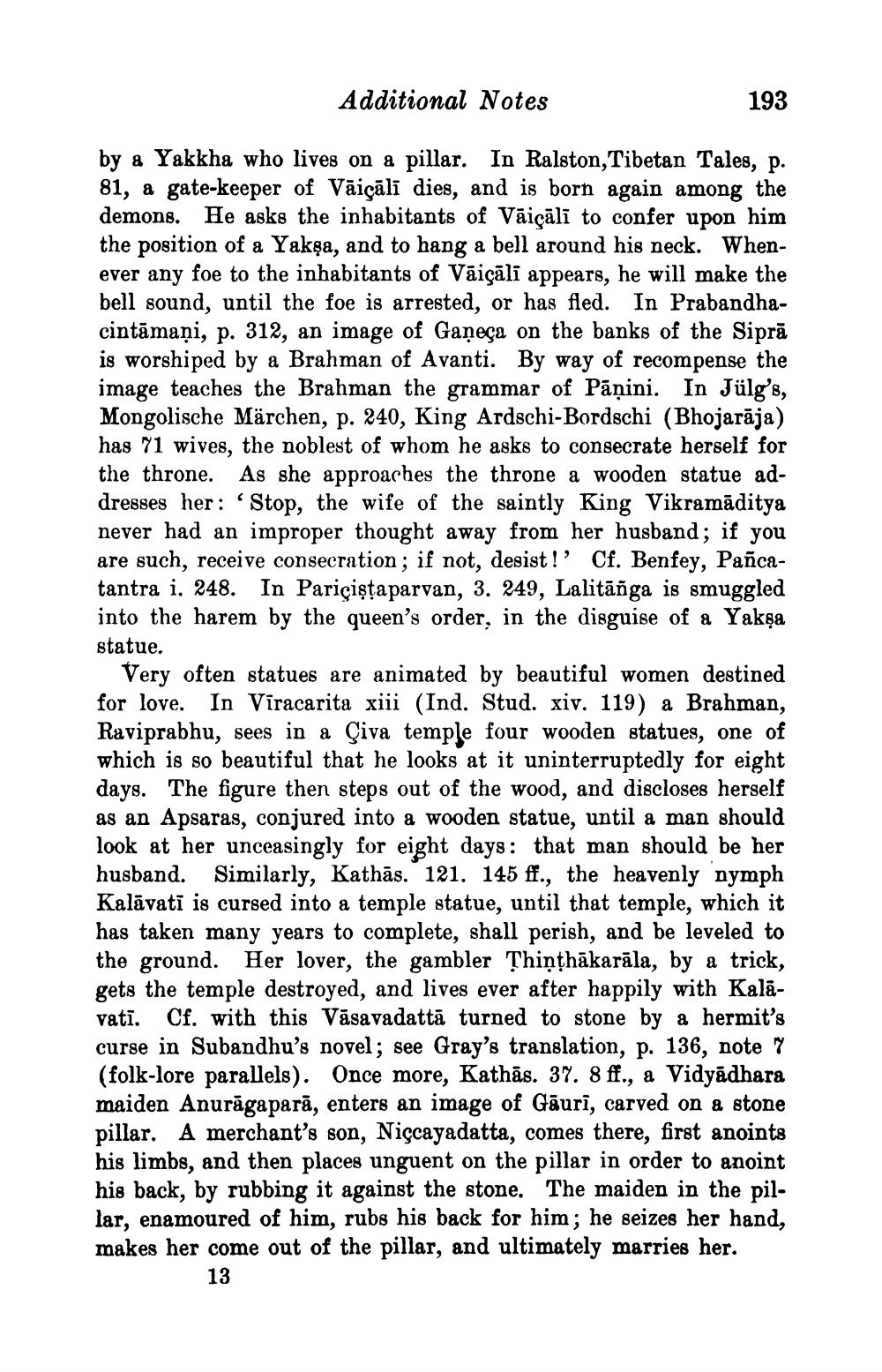________________
Additional Notes
193
by a Yakkha who lives on a pillar. In Ralston, Tibetan Tales, p. 81, a gate-keeper of Vāiçālī dies, and is born again among the demons. He asks the inhabitants of Vāicālī to confer upon him the position of a Yakşa, and to hang a bell around his neck. Whenever any foe to the inhabitants of Vāiçāli appears, he will make the bell sound, until the foe is arrested, or has fled. In Prabandhacintāmaņi, p. 312, an image of Ganeça on the banks of the Siprā is worshiped by a Brahman of Avanti. By way of recompense the image teaches the Brahman the grammar of Pāṇini. In Jülg's, Mongolische Märchen, p. 240, King Ardschi-Bordschi (Bhojarāja) has 71 wives, the noblest of whom he asks to consecrate herself for the throne. As she approaches the throne a wooden statue addresses her: 'Stop, the wife of the saintly King Vikramāditya never had an improper thought away from her husband; if you are such, receive consecration; if not, desist!' Cf. Benfey, Pancatantra i. 248. In Pariçistaparvan, 3. 249, Lalitāñga is smuggled into the harem by the queen's order, in the disguise of a Yakşa statue.
Very often statues are animated by beautiful women destined for love. In Viracarita xiii (Ind. Stud. xiv. 119) a Brahman, Raviprabhu, sees in a Çiva temple four wooden statues, one of which is so beautiful that he looks at it uninterruptedly for eight days. The figure then steps out of the wood, and discloses herself as an Apsaras, conjured into a wooden statue, until a man should look at her unceasingly for eight days: that man should be her husband. Similarly, Kathās. 121. 145 ff., the heavenly nymph Kalāvati is cursed into a temple statue, until that temple, which it has taken many years to complete, shall perish, and be leveled to the ground. Her lover, the gambler Thiņthākarāla, by a trick, gets the temple destroyed, and lives ever after happily with Kalavatī. Cf. with this Vāsavadattā turned to stone by a hermit's curse in Subandhu's novel; see Gray's translation, p. 136, note y (folk-lore parallels). Once more, Kathās. 37. 8 ff., a Vidyadhara maiden Anurāgaparā, enters an image of Gāuri, carved on a stone pillar. A merchant's son, Niccayadatta, comes there, first anoints his limbs, and then places unguent on the pillar in order to anoint his back, by rubbing it against the stone. The maiden in the pil. lar, enamoured of him, rubs his back for him; he seizes her hand, makes her come out of the pillar, and ultimately marries her.
13




